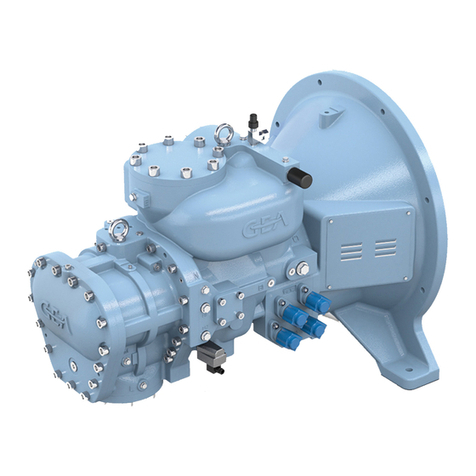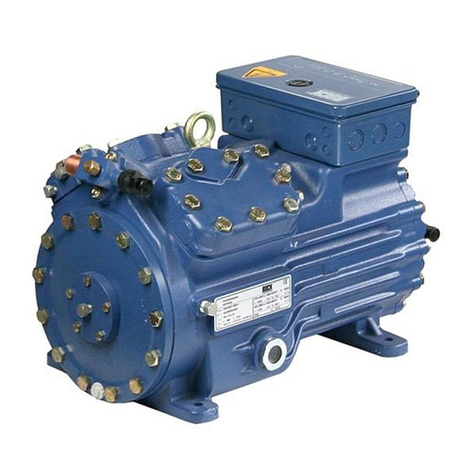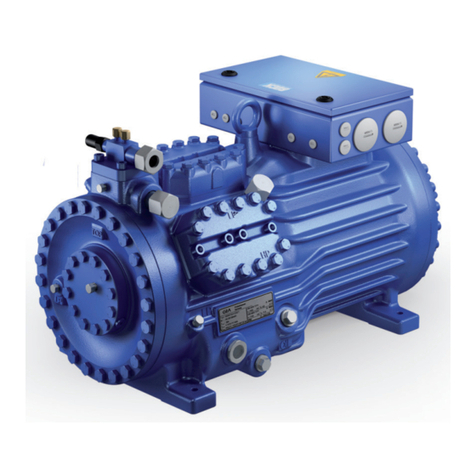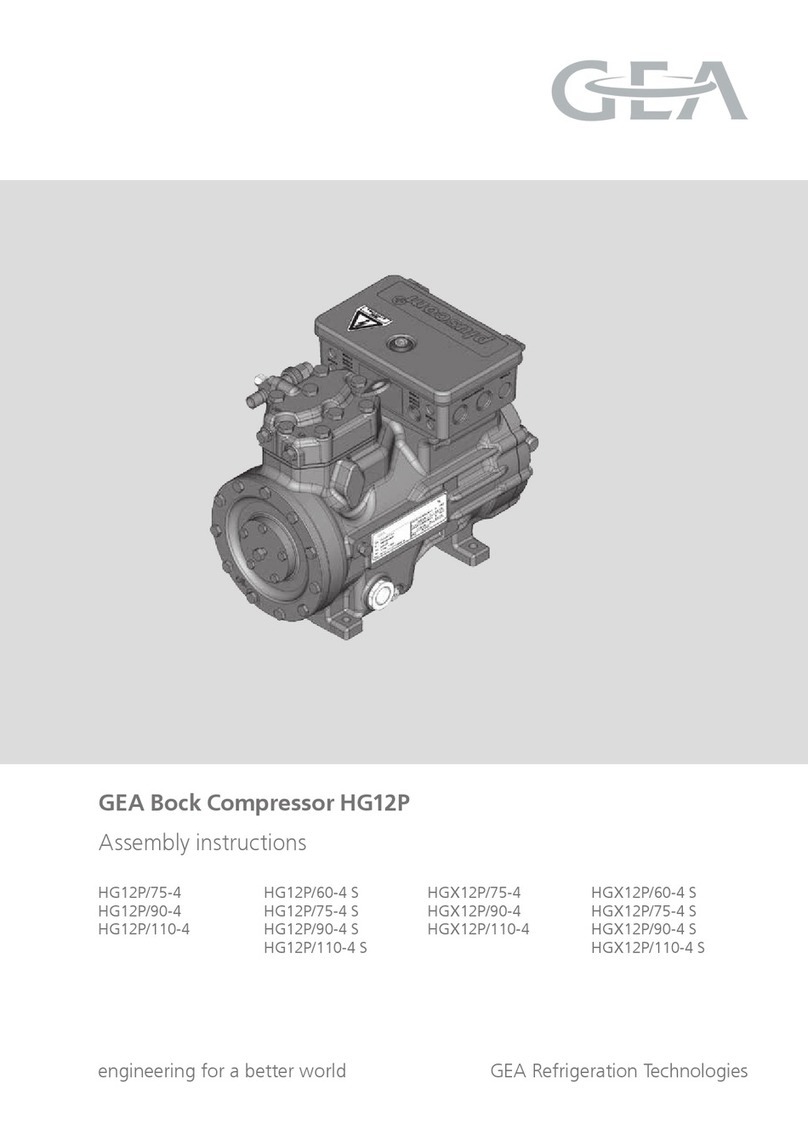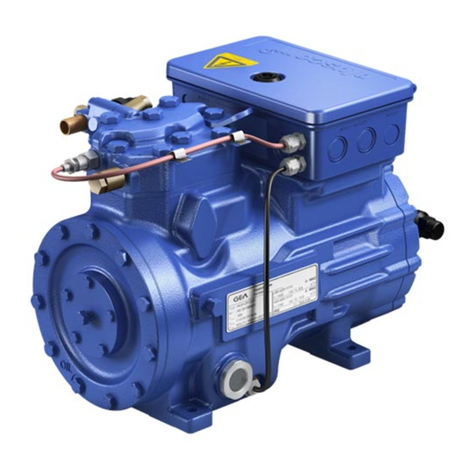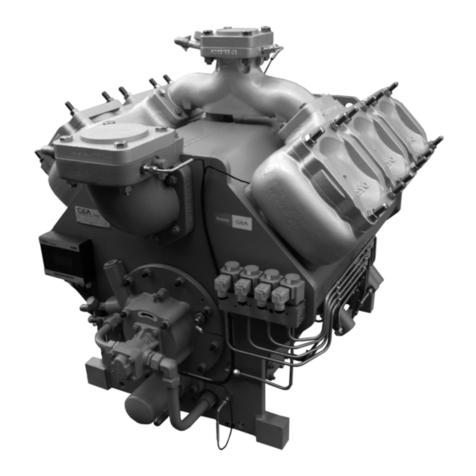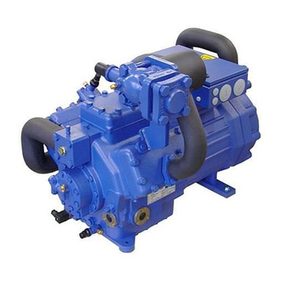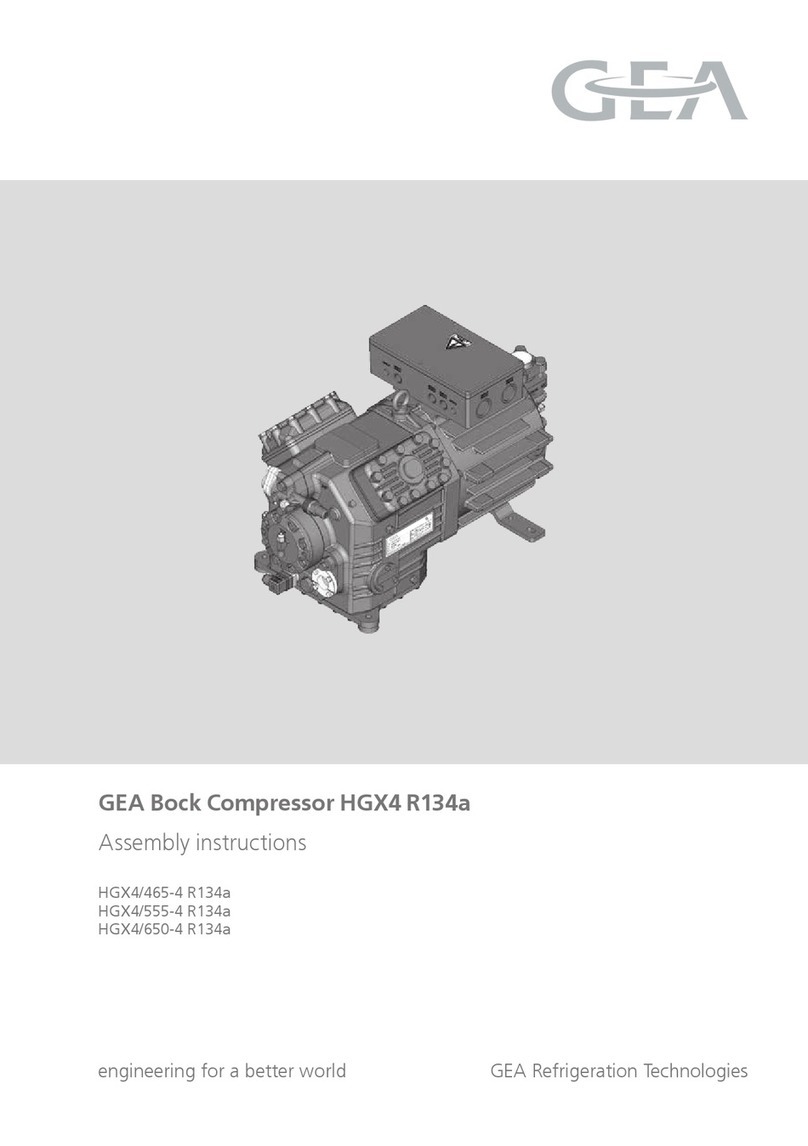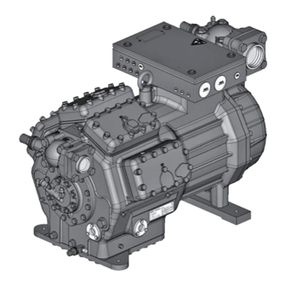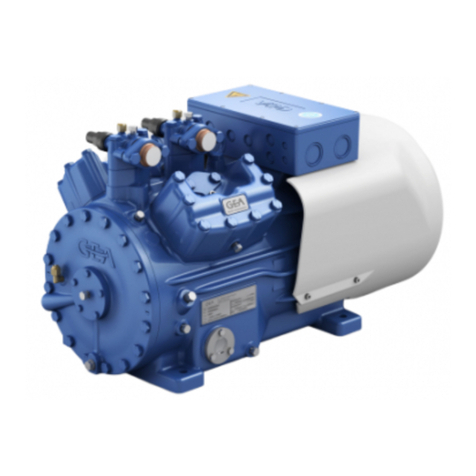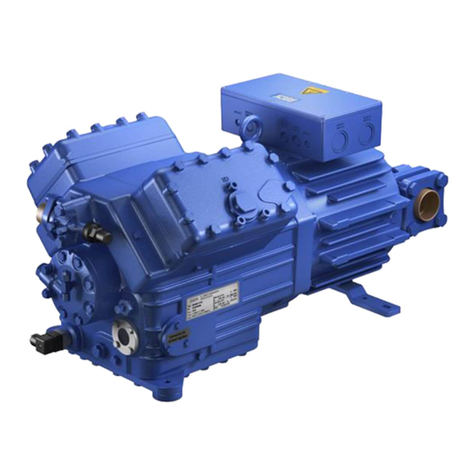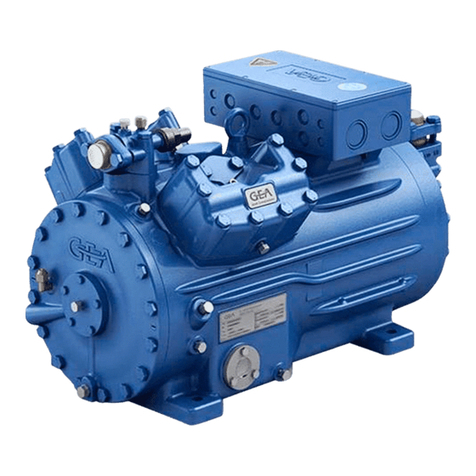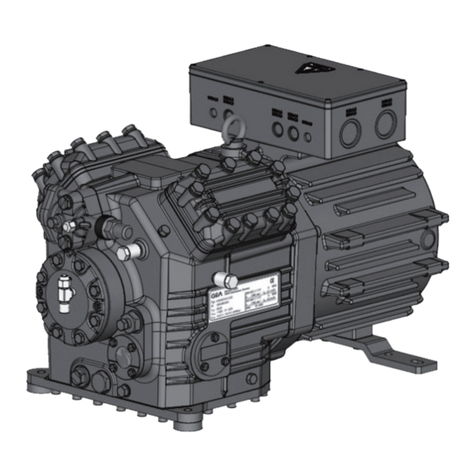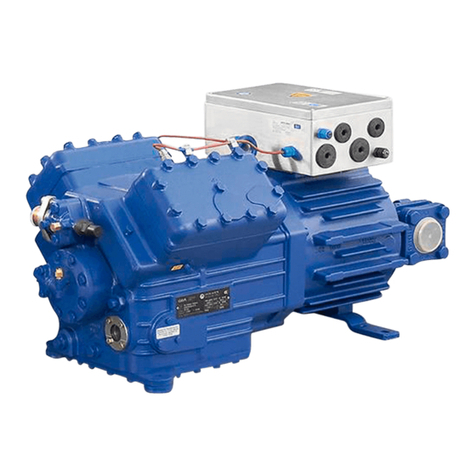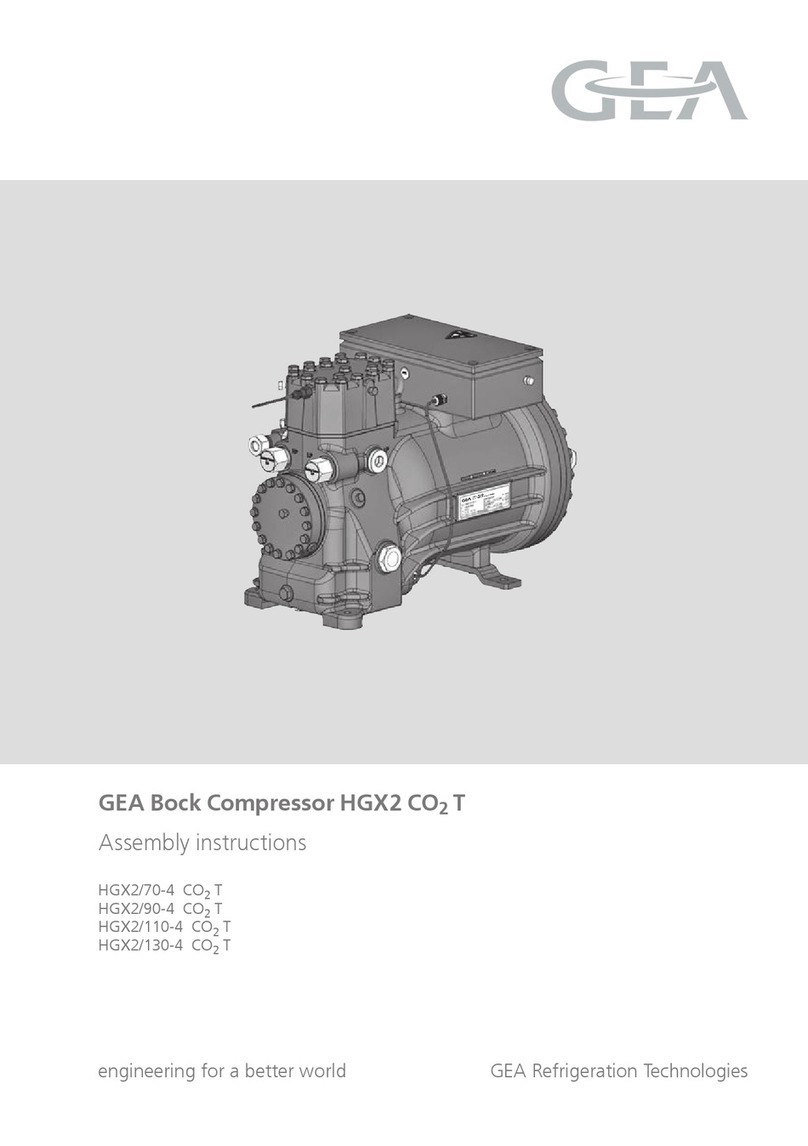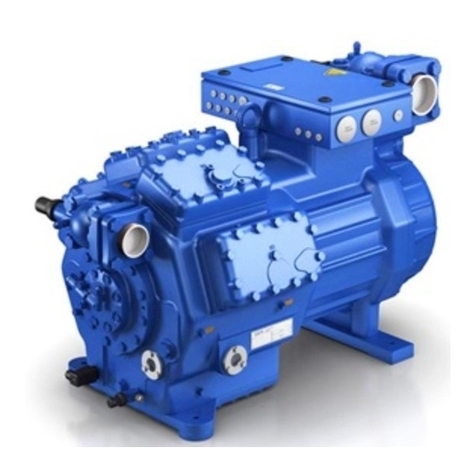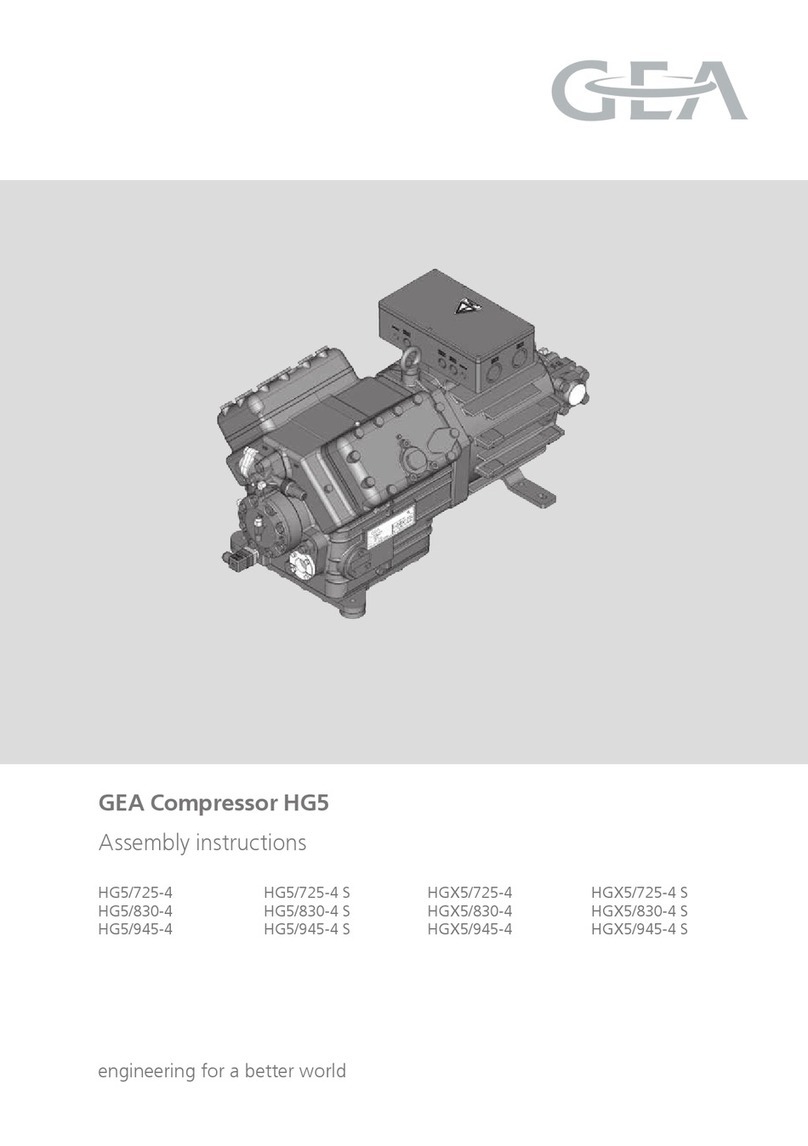3|Areas of application
ATTENTION! Compressor operation is possible within the limits of application
showninthediagrams.Pleasenotethesignicanceofthe
shaded areas. The limits of application must be observed.
Thresholds should not be selected as design or continuous
operating points.
-Max.permissibledischargeendtemperature:140°C
-Max.permissibleambienttemperature:100°C
-Max.permissibleswitchingfrequency:12x/h
-Aminimumrunningtimeof2min.atequilibrium
(continuous operation) must be achieved.
Avoid continuous operation near the threshold. Should the
compressor happen to be used near the thresholds, we
recommend the use of a thermal protection thermostat
(Accessories, Chap. 7).
Foroperationwithcapacityregulator:
- Continuous operation, when the capacity regulator is activated, is
not permissible and can cause damage to the compressor.
- The suction gas superheat temperature may need to be reduced or
set individually when operating near to the threshold.
- When the capacity regulator is activated, the gas velocity in the
systemcannotundercertaincircumstancesensurethatsufci-
ent oil is transported back to the compressor.
When operating in the vacuum range, there is a danger of air
entering on the suction side. This can cause chemical reactions,
a pressure rise in the condenser and an elevated compressed-
gas temperature. Prevent the ingress of air at all costs!
Thecompressorsarefactory-lledwiththefollowingoiltype:
- for R134a, R404A/R507, R407C FUCHS Reniso Triton SE 55
- for R22 FUCHS Reniso SP 46
Compressorswithesteroilcharge(FUCHSRenisoTritonSE55)aremarkedwithanXinthetype
designation (e.g. FKX50/775N).
3.1 Refrigerants
• HFKW / HFC: R134a, R404A/R507, R407C
• (H)FCKW/(H)CFC: R22
3.2 Oil charge
3.3 Limits of application
INFO! Forrecharging,werecommendtheaboveoiltypes.Alternativesare:
see lubricants table, Chapter 6.5.
